How To Make Naturally Fermented Pickles In Winter
Learn how to make naturally fermented pickles in winter without any special equipment and keep your gut flora optimized in every season.
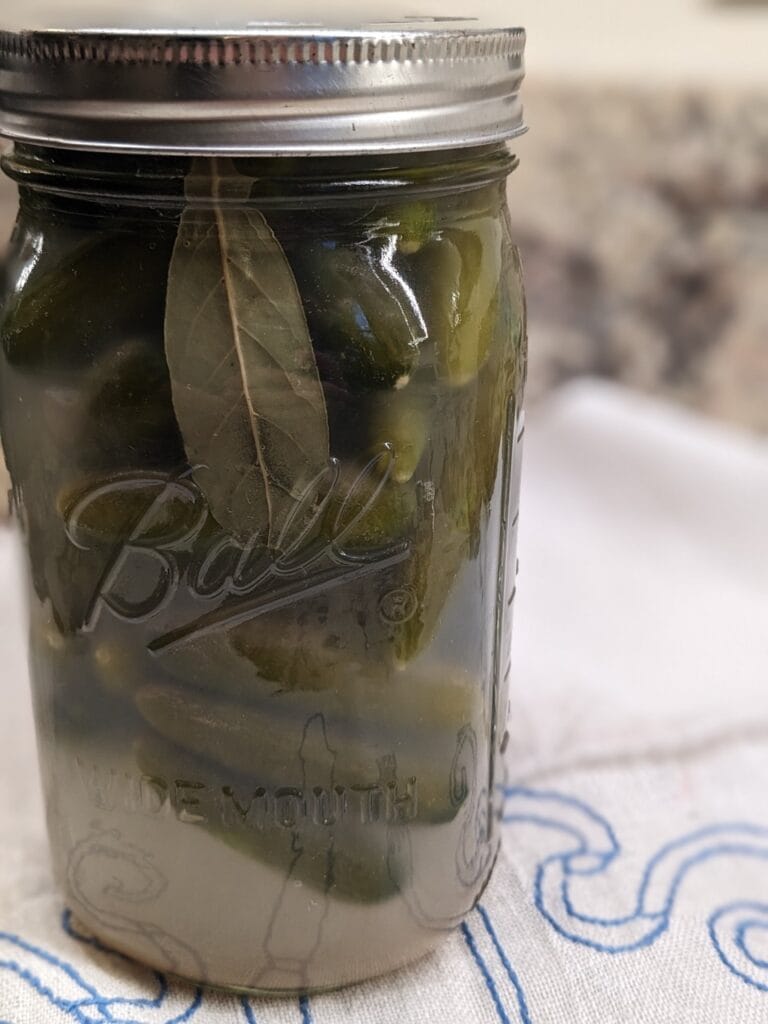
Why And How To Make Naturally Fermented Pickles In Winter
Have your kids’ eaten up your pickle stash? They were just too good!
I don’t have fresh cucumbers from the garden or the Farmer’s Market, but It’s January, and my kids’ want homemade pickles! I don’t have an expansive garden yet, or the storage space for a lot of preserves. So, whenever the need arises, I buy a package of small cucumbers at the grocery store and naturally ferment them at home.
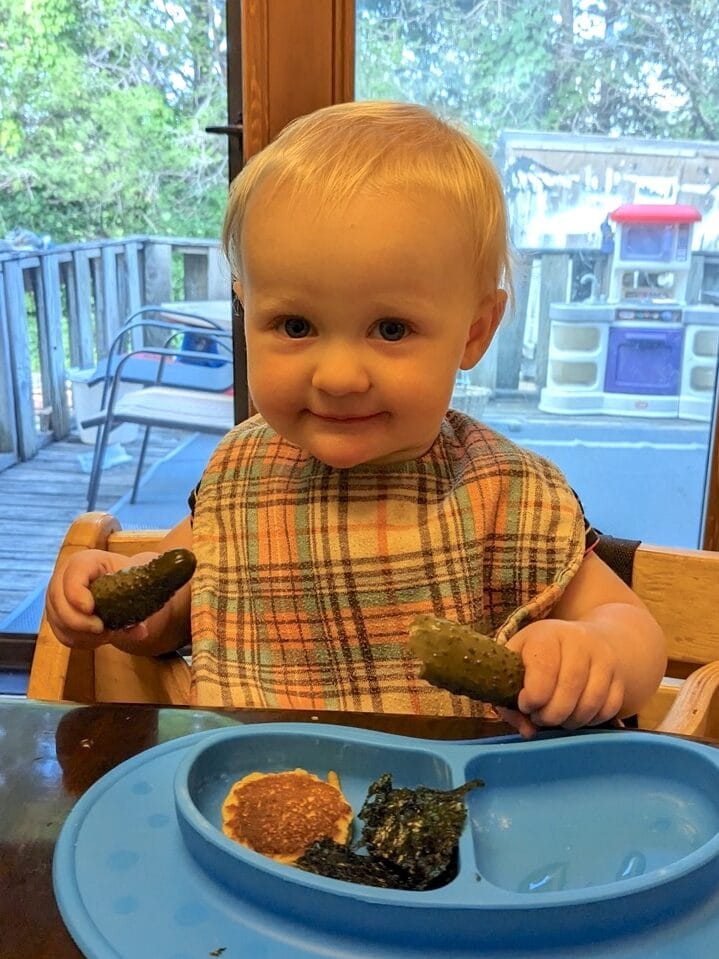
Why Would You Want To Ferment Cucumbers?
There are a few great reasons to ferment cucumbers:
- Makes cucumbers last longer
- They develop lots of beneficial bacteria to keep you healthy
- You end up with a very probiotic rich brine too, to help inoculate your next batch with probiotic goodness or to just drink straight from the jar as a homemade gut shot!
FAQs
What Kind Of Pickles Are Best For Fermenting?
I love using the mini or micro-mini cucumbers. They usually all fit into one quart sized jar. You can keep them whole, and they’re the perfect snacking size.
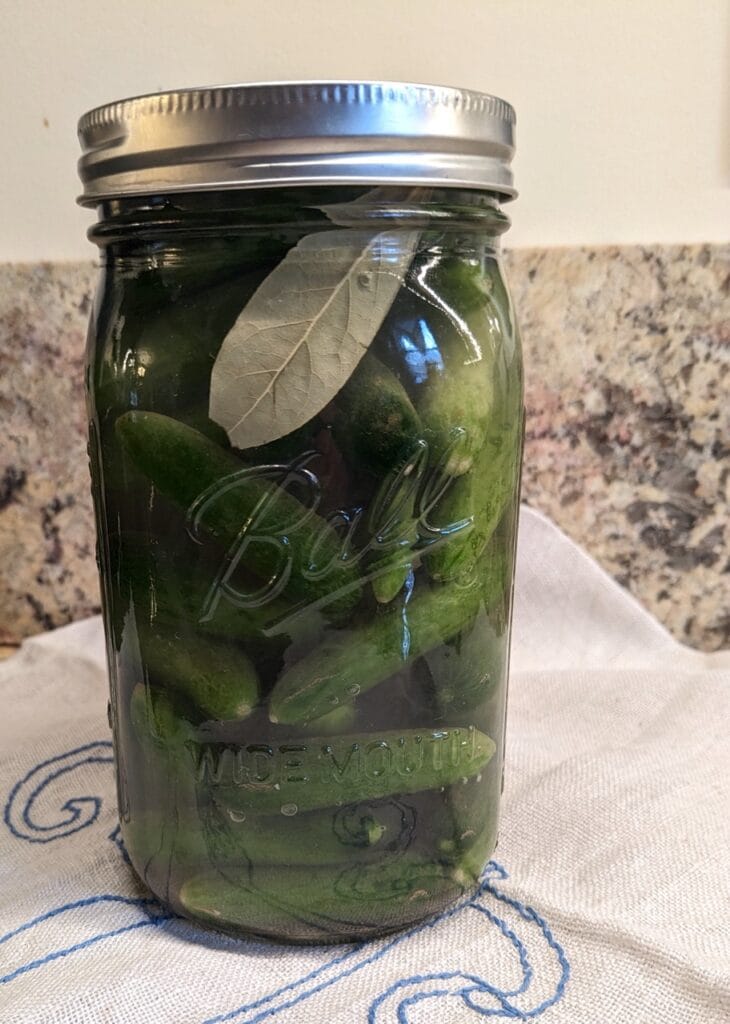
Do I Need Any Fancy Equipment To Make Naturally Fermented Pickles In Winter?
Nope! You don’t even need special lids or weights. Any jar will work. Add enough brine to fully submerge the vegetables, but here’s my secret tip: you don’t need weights or fermentation lids.
But you do need to burp your jars (open, the retighten the lid) and submerge the vegetables (shake the jar) everyday.
What Can I Pickle Or Ferment In Winter?
Anything really! Of course, it makes sense to use this preservation method in the height of summer when fresh produce is local and abundant, but when you run out and your buying fresh or fermented produce from the store anyway, fermenting it is a great way to save a few bucks and make it the way to want it.
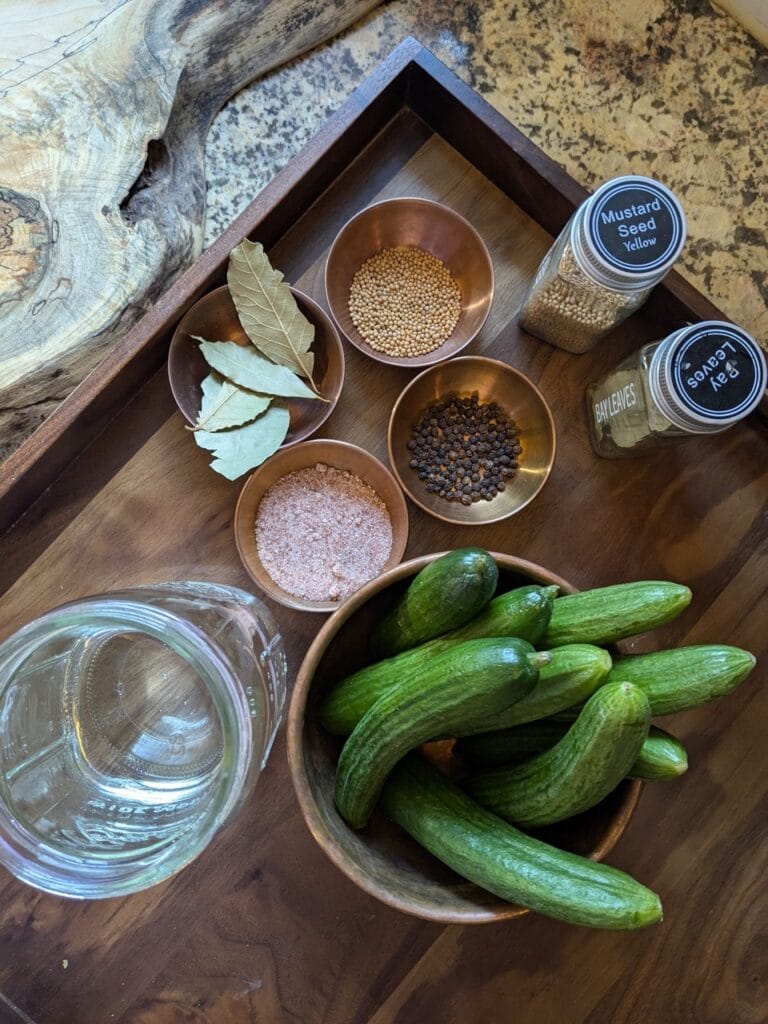
What Improves Pickle Firmness For Naturally Fermented Pickles In Winter?
Tannins help keep the pickles crisp. Foods with tannins include but is not limited to:
- grape leaves
- raspberry or blackberry leaves
- horseradish leaves
- oak leaves
- bay leaves
- black tea
In the summer, I’ve used wild grape and black raspberry leaves that grow around my property. But in winter, I’ll just add a couple bay leaves to each jar.
Why Should You Not Pour Pickle Juice Down The Drain?
Your pickle juice ends up being chock full of beneficial bacteria, just like the pickles! You can use this to inoculate your next batch to give it a head start, or just drink it as a probiotic and electrolyte-rich gut shot.
Where Do The Probiotics In Pickles Come From?
Beneficial bacteria is present on raw fruits and vegetables. When submerged in a salty brine, the environment is optimized for good bacteria growth while inhibiting the growth of unwanted bacteria.
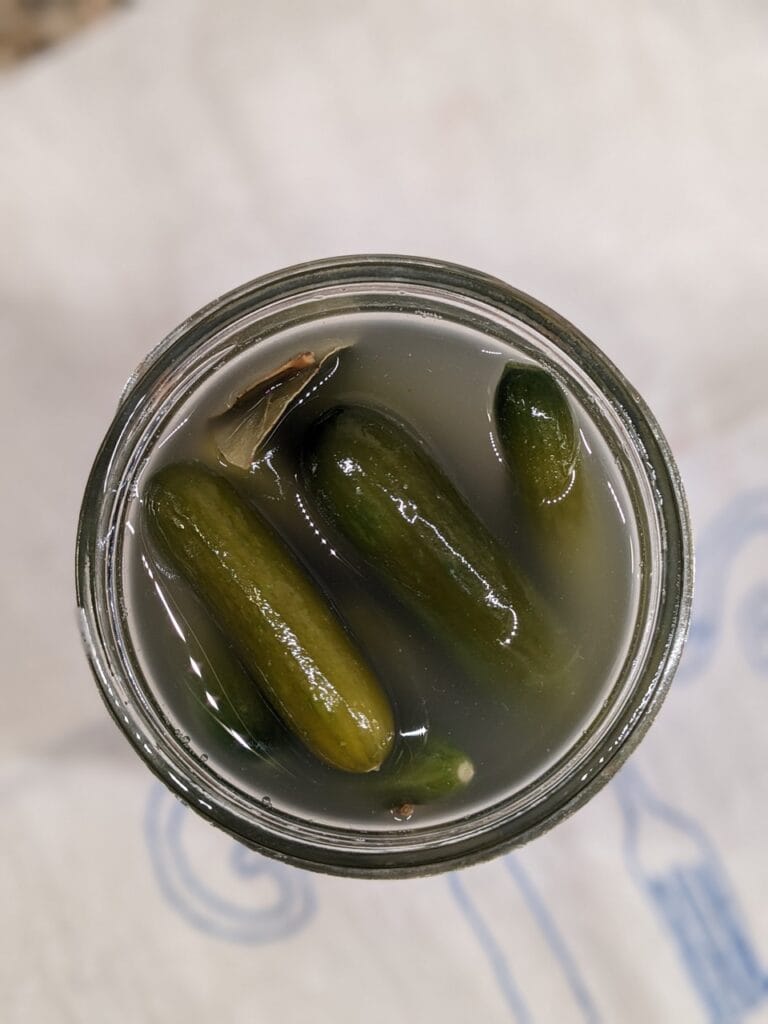
Why Is A Pickle Called A Pickle?
According to this PBS article on the history of pickles, “The word pickle comes from the Dutch pekel or northern German pókel, meaning salt or brine, two very important components in the pickling process.”
How Long Do Fermented Pickles Last?
Naturally fermented pickles can last in cold storage for up to a year or even longer. There’s nothing that can go bad about them, but they will keep developing and maturing their flavor and texture profile. So, you might want to eat them up sooner than that (and probably won’t have any problem doing so!)
Can I Add Other Herbs And Spices To My Naturally Fermented Pickles To Flavor Them?
Yes! That’s the beauty of fermenting them yourself. They are delicious in plain sea salt brine, yet the flavor options are many:
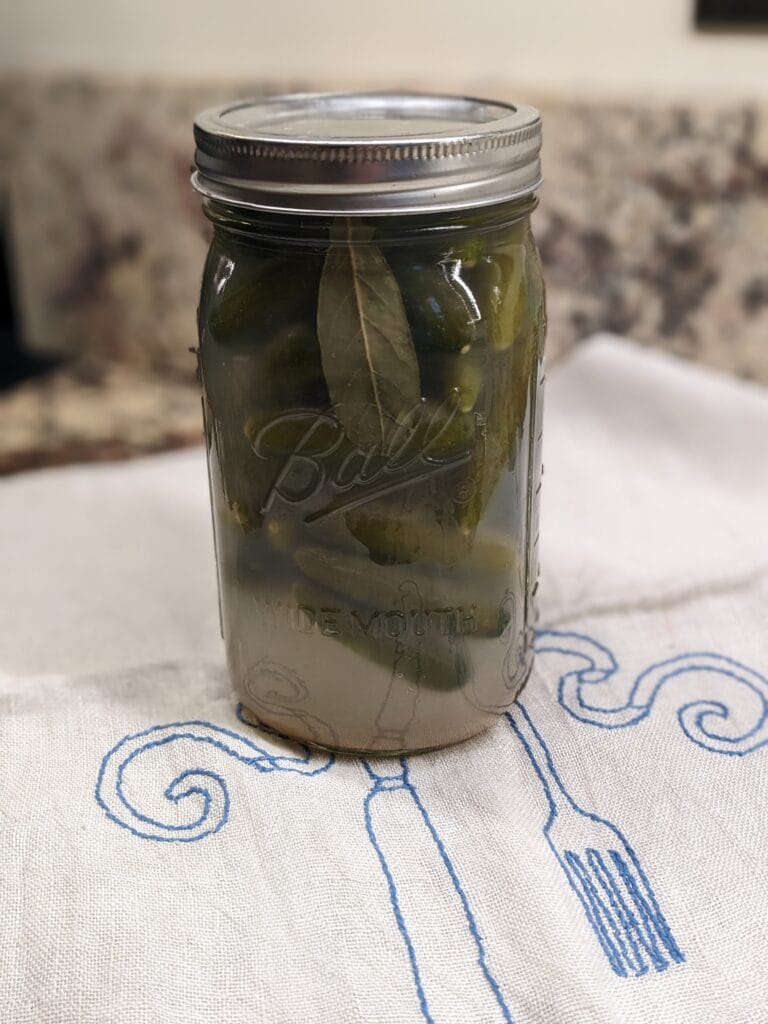
Do You Use Vinegar And Does The Brine End Up Tasting Like Vinegar?
Nope, not at all. It’s as easy as soaking cucumbers in salty water. The naturally beneficial bacteria on the surface of the vegetables provides all the inoculation you need, and the end result is a very pleasant slightly sour, salty taste.
What Is The Salt To Water Ratio For Naturally Fermented Pickles?
The salt ratio for naturally fermented pickles can range from 2% to 5%, depending on the type of vegetable and how long you want to ferment it. You don’t have to be too picky, and I have learned to add salt to my brine to taste.
For starters though, I would dissolve 2-3 tablespoons of sea salt in one quart sized jar of water.
The Basics Of How To Make Naturally Fermented Pickles In The Winter:
- Ingredients:
- Mini cucumbers
- Sea salt
- Water
- Tannin containing leaves: bay, oak, raspberry, grape, black tea (optional)
- Spices: garlic, mustard seeds, coriander seeds, hot pepper flakes, rosemary, thyme, peppercorns (optional)
Instructions:
- Make brine by mixing sea salt and warm filtered water.
- Stuff herbs, spices and tannin containing leaves in a quart canning jar.
- Squeeze as many cucumbers in as you can (because they will shrink slightly while in the brine).
- Pour salt brine over cucumbers just enough to cover.
- Cover with lid.
- Set our on your counter for a few days, shaking everyday to cover everything in brine.
- Taste test everyday after day 3 and put in fridge when they taste good to you.
- Enjoy!
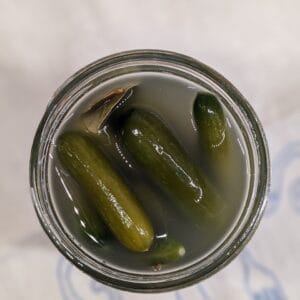
Naturally Fermented Pickles Recipe
Equipment
- 1 quart wide mouth mason jar
- 1 wide mouth mason jar lid
Ingredients
- Mini cucumbers
- Sea salt
- Water
- Tannin containing leaves bay, oak, raspberry, grape (optional)
- Spices garlic, mustard seeds, hot pepper flakes, peppercorns (optional)
Instructions
- Make brine by mixing sea salt in warm filtered water to dissolve.
- Add herbs, spices and tannin containing leaves to a quart canning jar.
- Squeeze as many cucumbers in as you can (because they will shrink slightly while in the brine).
- Pour salt brine over cucumbers just enough to cover.
- Cover with lid.
- Set out on your counter for a few days, shaking everyday to cover everything in brine.
- Taste test everyday after day 3 and put in fridge when they taste good to you.
- Enjoy!
Nutrition
Shop this post
- quart sized jar
- sea salt
- mustard seeds
- bay leaves
- black tea
- coriander seeds
- hot pepper flakes
- rosemary
- thyme
- peppercorns
- McCormick Gourmet Organic Garlic & Herbs Everyday Basics Variety Pack
Pin It For Later
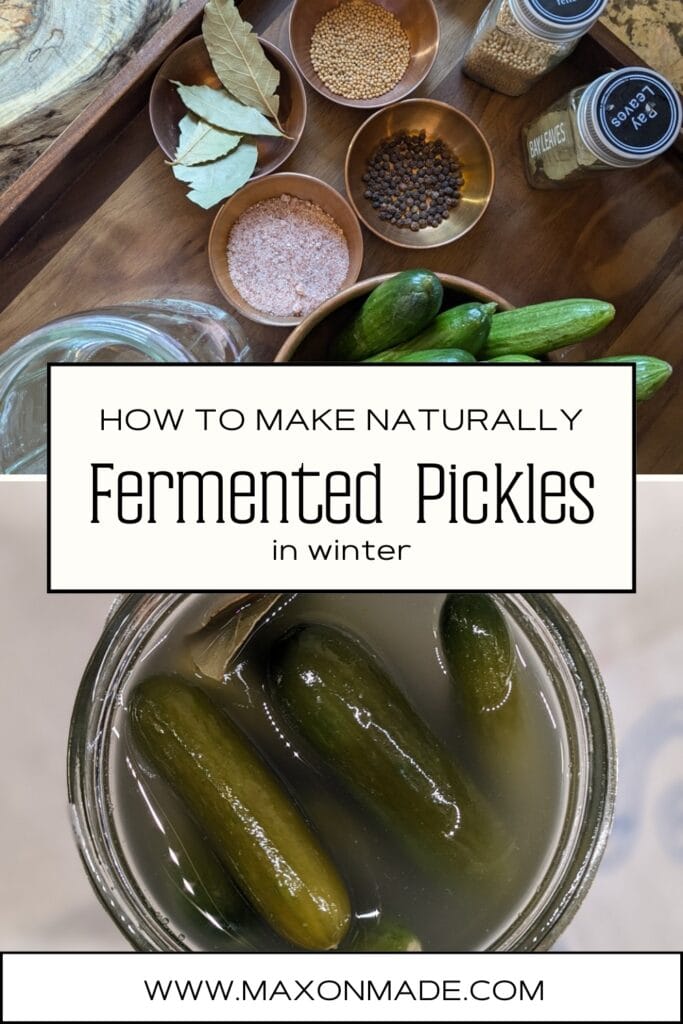
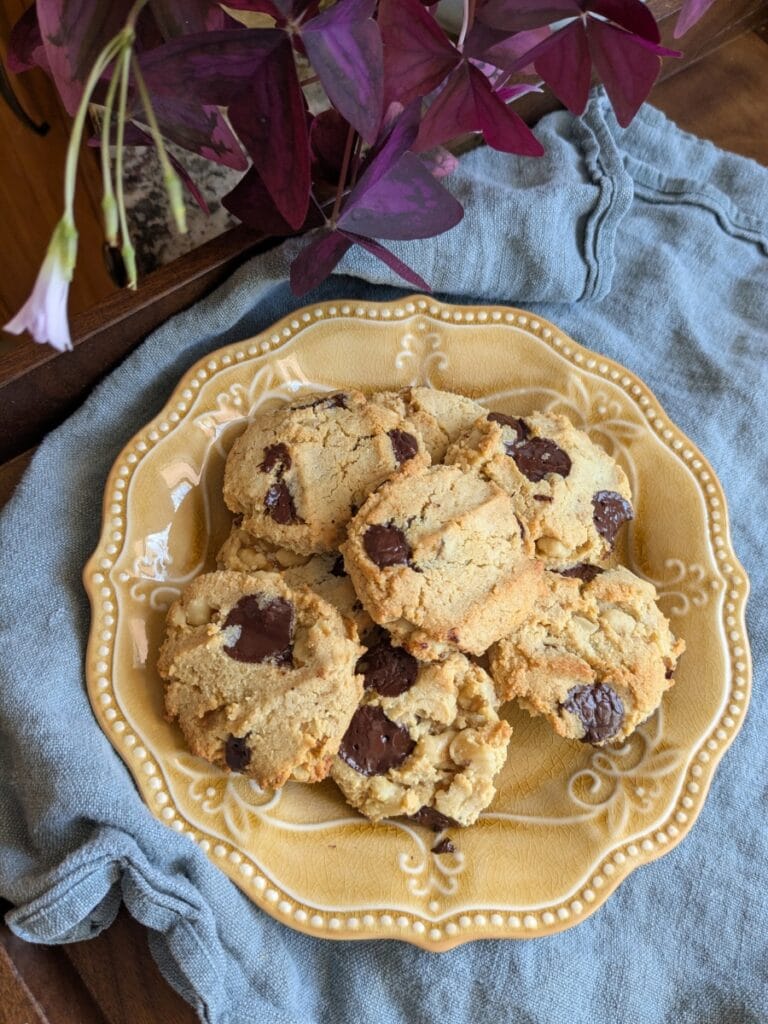
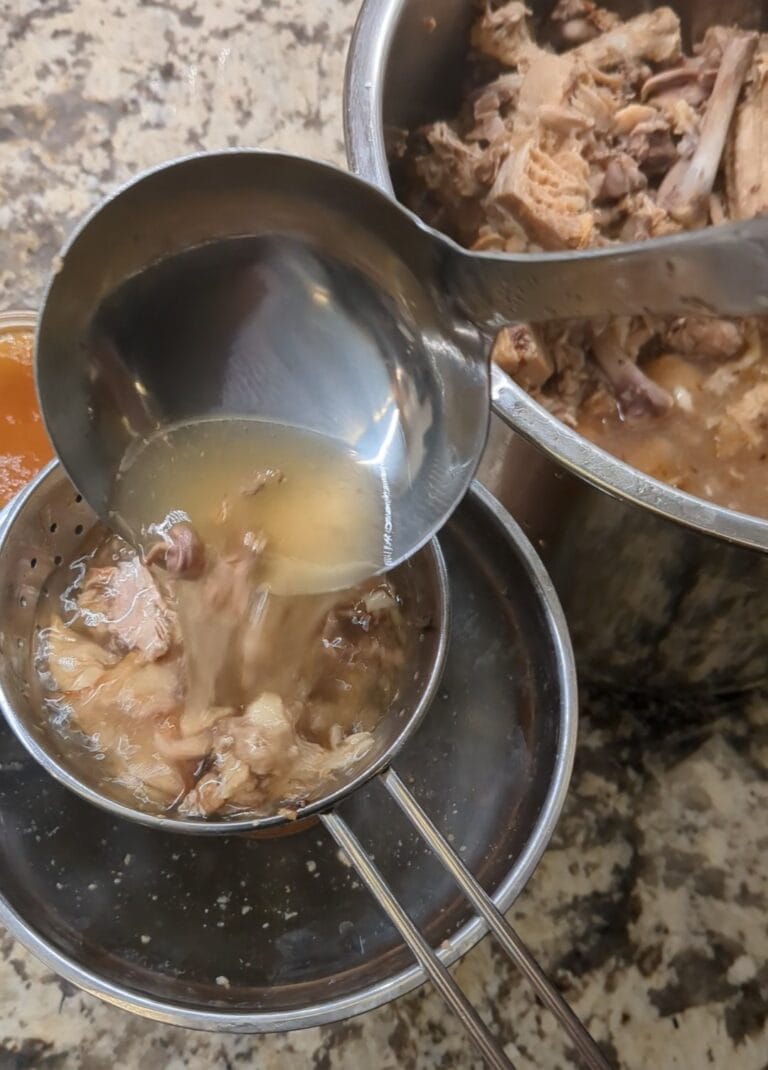

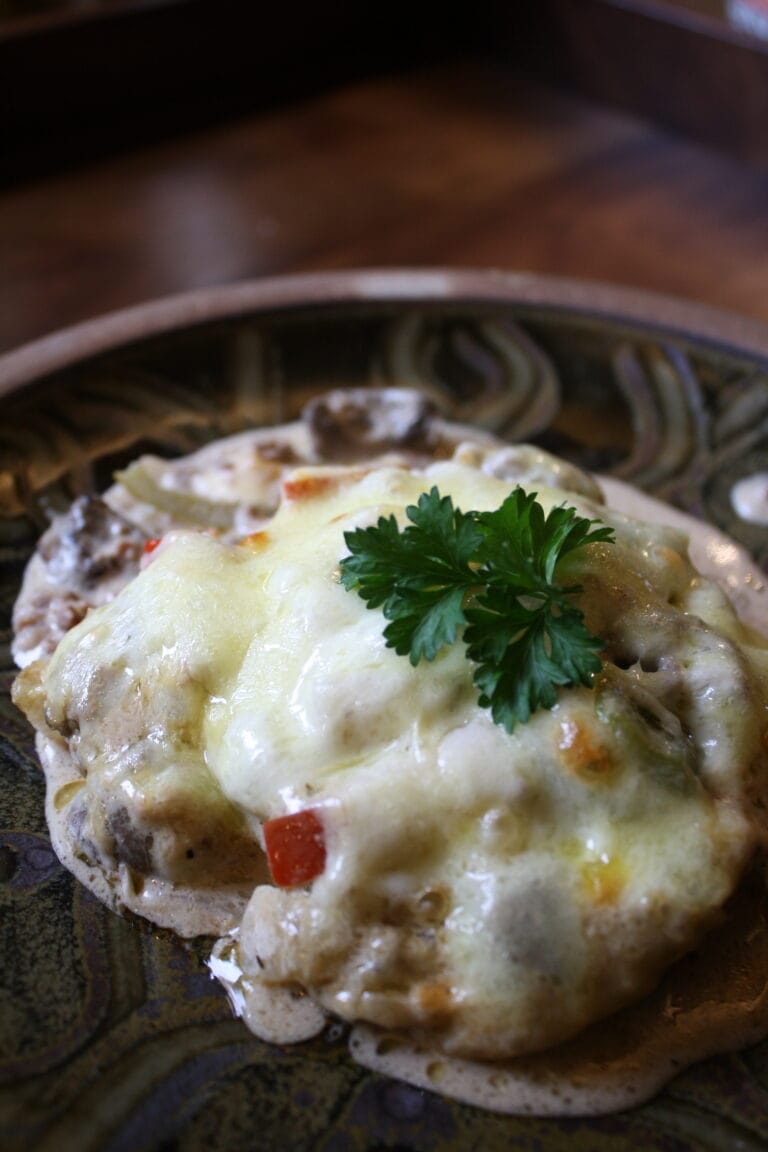

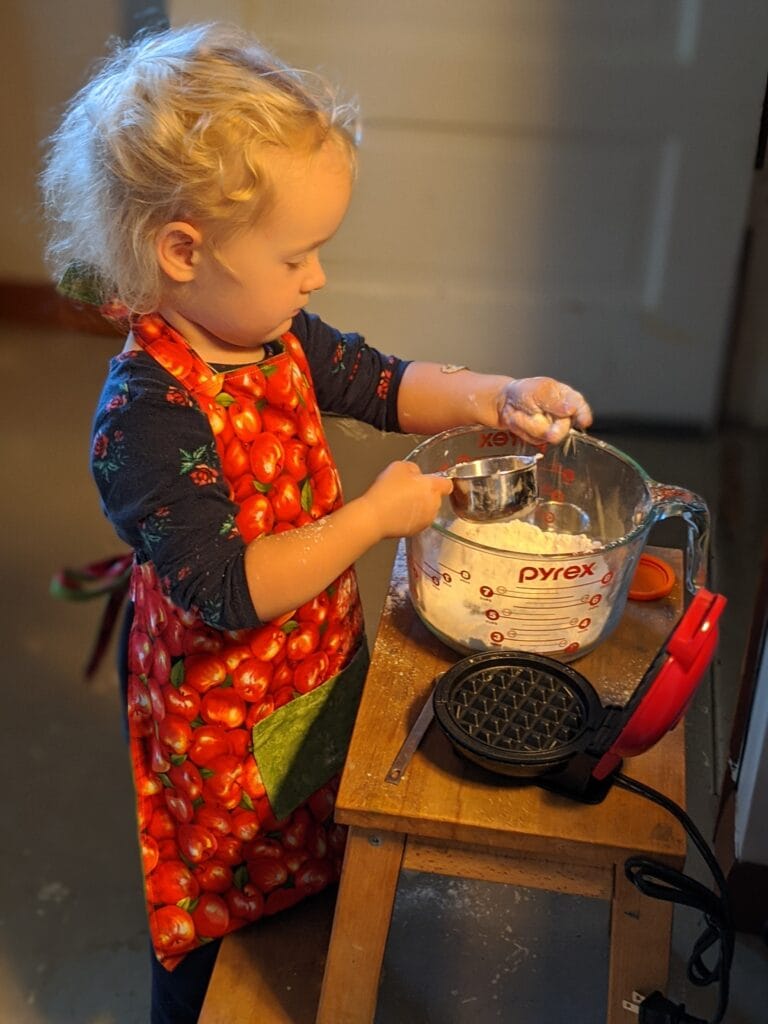
You’ll love these pickles, I’m sure of it! Let me know if you have any questions, and I’ll respond as soon as I can!